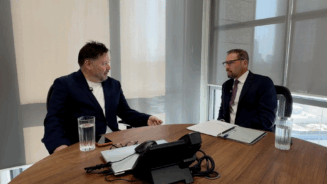“The risk of a major deflationary growth slowdown is increasing,” write Sander Bus and Victor Verberk, co-heads of credit at the Dutch asset manager in their credit market outlook.
At a time when deflationary risks in Europe have increased markedly, with ECB-president Mario Draghi declaring last week that “the threat of deflation is gone”, that sounds a little contrarian.
The pair indeed admit that Europe is “in full expansion mode,” with equity markets advancing as earnings growth and economic activity is picking up. But, whereas Europe was a main source of volatility globally over the past few years due to the uncertain political backdrop, risks are now to be found elsewhere.
First, Verberk and Bus point to the place where financial crashes tend to originate as a major source of risk. “The US credit cycle is too far advanced and vulnerable to a turn for the negative in US growth,” they contend.

“We have been concerned about a number of leading indicators that might point to economic weakness in the US. Profit and margin contraction, a flattening curve or a very weak capital spending cycle all show that this economic expansion is vulnerable.”
“Subprime lending has been booming again. Car loans, student loans and credit card debt delinquencies are on the rise. In automotive subprime lending, delinquencies are at levels we have not experienced since 2007/2008.”
Fed ‘ahead of the curve’
This apparent weakness in the US economy risks being exacerbated by the Federal Reserve getting ahead of itself. While US inflation has been unusually weak for three consecutive months and ‘Trumpflation’ has stalled due to the US President’s inability to get any of his (supposed) plans through Congress, the Fed still hiked rates at their June meeting.
This prompted US asset manager Fidelity to claim “the Fed is now firmly ahead of the curve”. In its market outlook for Q3, it said: “While Chair Janet Yellen believes the softer inflation numbers are transitory, this clearly increases the risk of a policy error.”
“We now have a major central bank signalling that their inflation target is not symmetric and that they need to give themselves room to manoeuvre if conditions deteriorate. We do not see core inflation moving above 2% over the next 12 months, which is likely to make it more difficult for the Fed to justify future rate hikes.”
Continued on the next page




